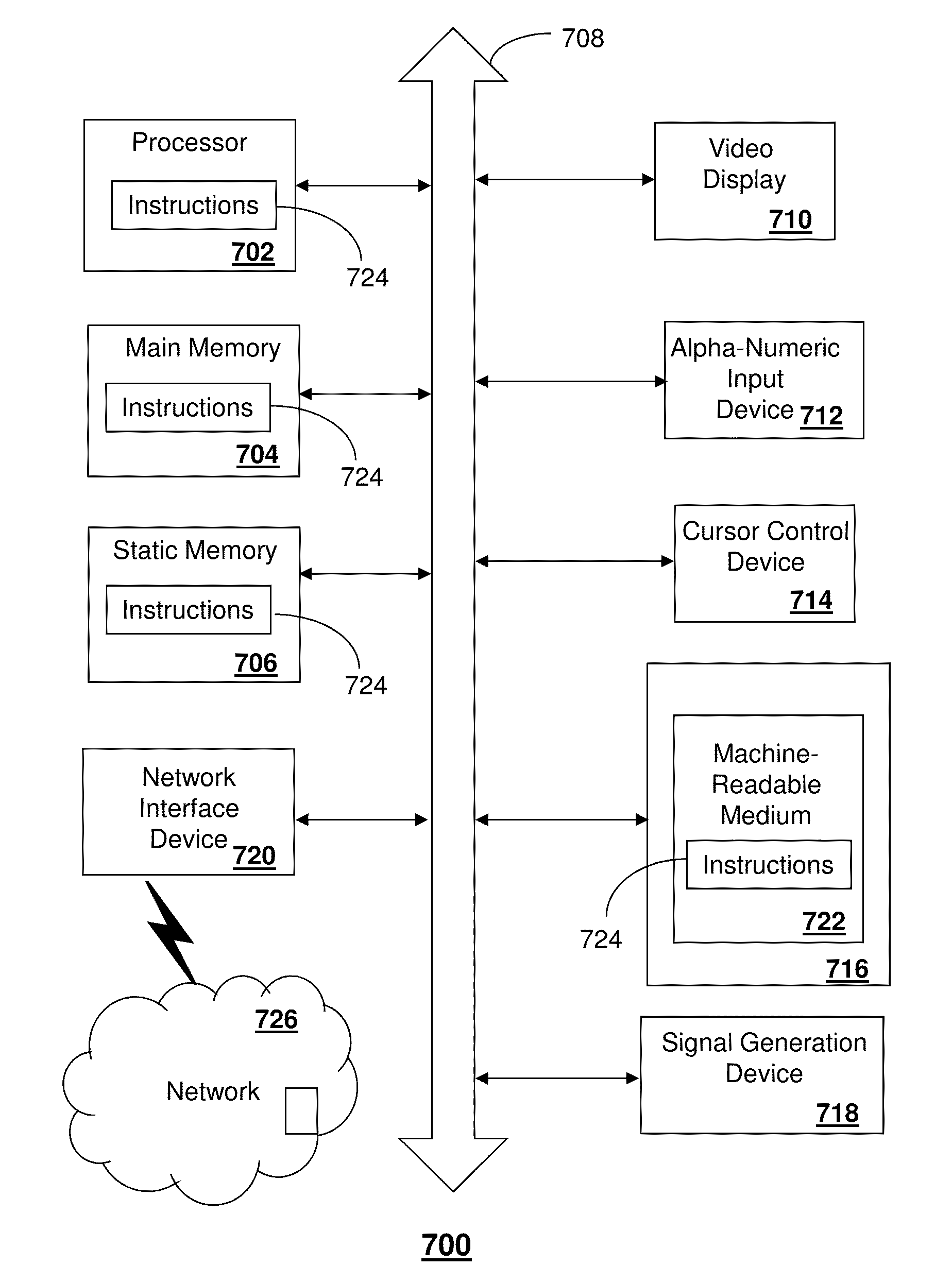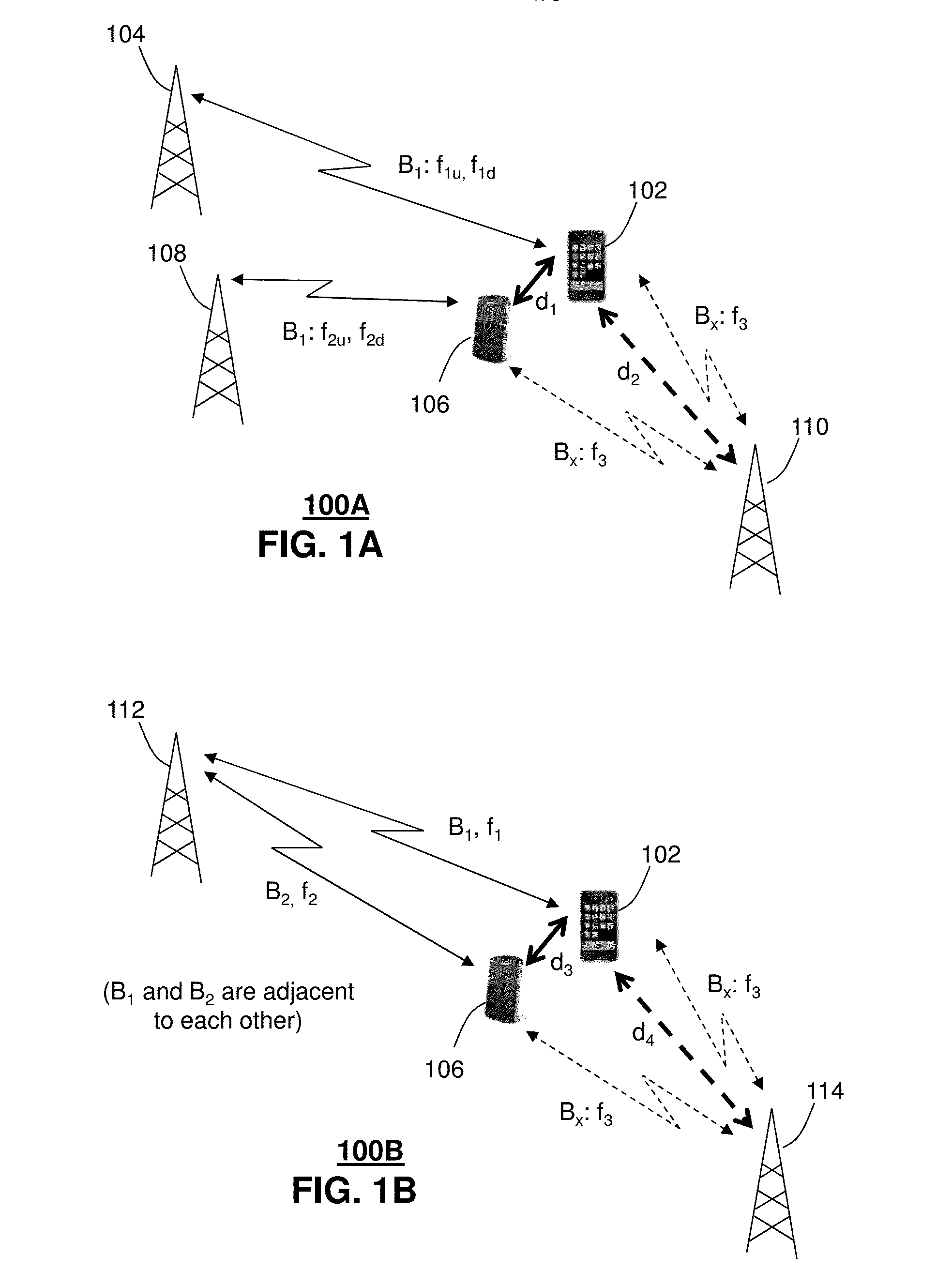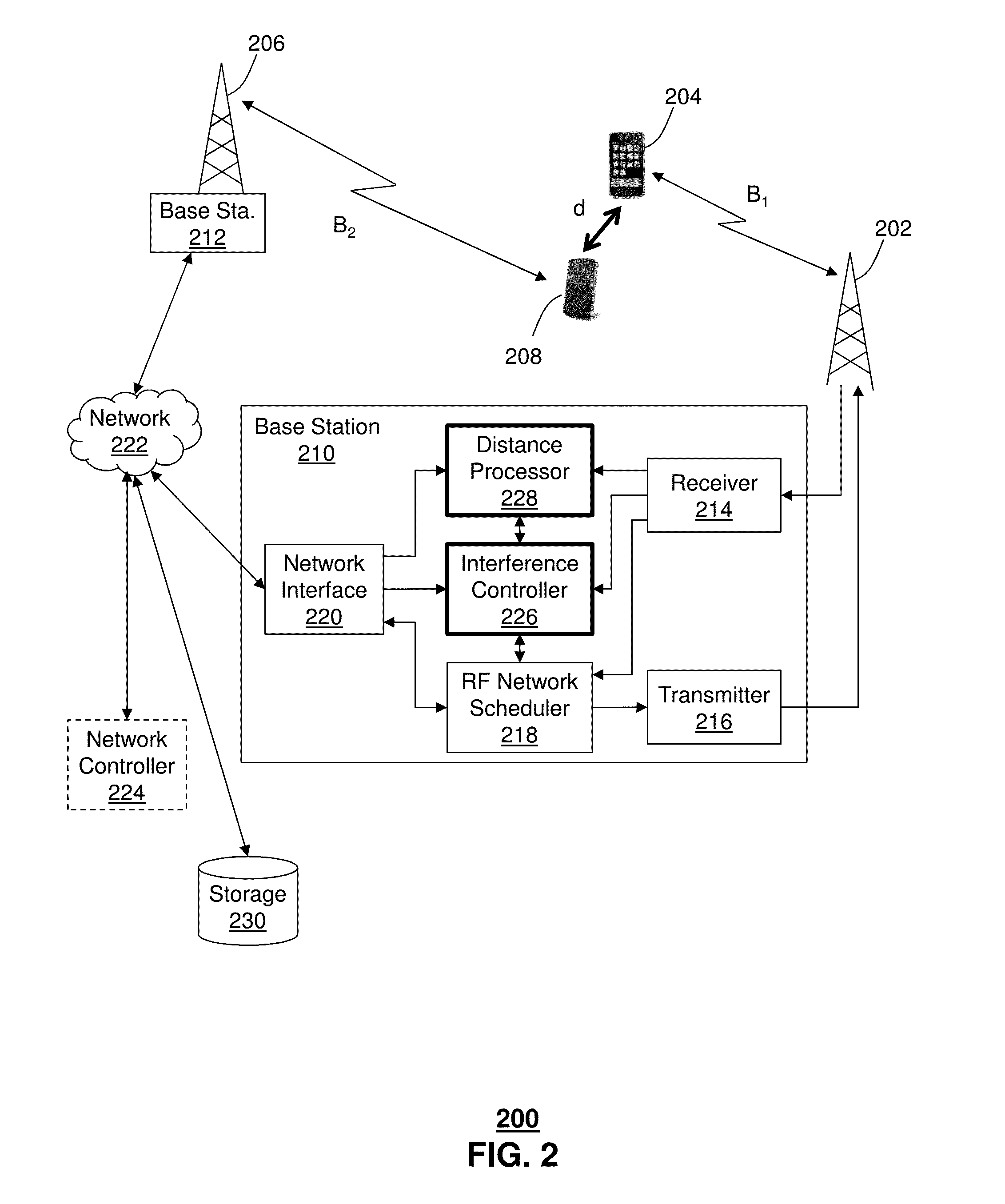Dynamic access management of wireless communication resources
a wireless communication resource and dynamic access technology, applied in the direction of time-division multiplex, electrical equipment, location information based services, etc., can solve the problems of affecting the performance of the receiver, odd order intermodulation distortion products can be particularly troublesome, and intermodulation distortion that falls within the same band
- Summary
- Abstract
- Description
- Claims
- Application Information
AI Technical Summary
Benefits of technology
Problems solved by technology
Method used
Image
Examples
Embodiment Construction
[0016]The subject disclosure describes, among other things, illustrative embodiments of determining an interference pattern between wireless emitters and a receiver of a wireless mobile device, and determining distances between the wireless emitters and the wireless mobile device. Interference at the receiver is determined according to an updated status report, such as, e.g., a status report received from the wireless mobile device. Upon detection of interference, an interfering source is identified, such as, e.g., by a mobile network in communication with the wireless mobile device, according to the interference pattern and the distances. In response to identifying the interfering source, one or more frequencies are reassigned to modify the interference pattern and thereby eliminate the source of interference. Other embodiments are included in the subject disclosure.
[0017]One embodiment of the subject disclosure includes a process that uses an interference controller to collect an ...
PUM
 Login to View More
Login to View More Abstract
Description
Claims
Application Information
 Login to View More
Login to View More - R&D
- Intellectual Property
- Life Sciences
- Materials
- Tech Scout
- Unparalleled Data Quality
- Higher Quality Content
- 60% Fewer Hallucinations
Browse by: Latest US Patents, China's latest patents, Technical Efficacy Thesaurus, Application Domain, Technology Topic, Popular Technical Reports.
© 2025 PatSnap. All rights reserved.Legal|Privacy policy|Modern Slavery Act Transparency Statement|Sitemap|About US| Contact US: help@patsnap.com



